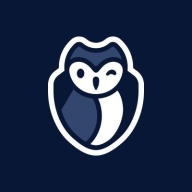

Check Point Security Management and GitGuardian Platform operate in the security management category, with Check Point having an advantage in network security management, while GitGuardian excels in application secrets protection.
Features: Check Point Security Management offers centralized firewall policy management, threat prevention, and identity awareness through Active Directory integration. It provides granular control over firewall rules and automation features. GitGuardian Platform focuses on real-time secret detection in codebases, offering integrations and automated alerts for enhanced security measures.
Room for Improvement: Check Point users desire better performance, integration with platforms, and improved SmartConsole functionalities. Enhancements in speed and macOS support are also noted. GitGuardian users seek better incident management and integrations, particularly with developer tools and real-time feedback capabilities.
Ease of Deployment and Customer Service: Check Point supports on-premises, hybrid, and private cloud environments, but experiences with technical support are mixed. GitGuardian, operating in public cloud environments, boasts simple deployment and straightforward customer service, though pricing can impact support experiences.
Pricing and ROI: Check Point is a premium solution with higher costs that are justified by its features and substantial ROI, due to efficient policy management and reduced incidents. GitGuardian is cost-effective for smaller teams but can be expensive at scale with per-developer licensing, offering significant security benefits by mitigating risks due to exposed secrets.
I have seen a return on investment with Check Point Security Management, as my security concerns regarding data production have been greatly diminished, and my time is also saved.
I have seen a strong ROI from using Check Point Security Management through unified policy management, reduced misconfigurations, and faster incident response.
I can certainly say that we have saved significant time and resources in terms of people and automation.
The majority of our incidents for critical detectors and important secret types are remediated automatically or proactively by developers through GitGuardian's notification system, without security team involvement.
We have partner support that helps us mitigate vulnerabilities reported by our infrastructure team.
The challenge was with drivers due to the size, and we had not provisioned the partition to the right size.
It effectively helps us with credentials security and has been performing satisfactorily.
I would rate their technical support a nine out of ten.
I would rate the technical support as excellent.
So far, it has been functioning smoothly without any issues in the past 1.5 years.
When you upgrade multiple times, you leave many files that are useless. They are dated, so it's always better to create a new machine every few versions, for example, three or four major versions.
In terms of scalability, I would rate it around a ten out of ten, as it handles all the repositories and commit activity we have.
I would rate it a ten out of ten for scalability.
Currently, what GitGuardian Platform is doing works effectively.
In my environment, Check Point Security Management is stable, as I do not see any downtime.
We set up a lot of the repository, so GitGuardian is a required check.
The SaaS platform has experienced two significant moments of downtime or instability in the last six months, requiring notices and retrospectives.
I would rate the stability of the GitGuardian Platform as excellent with no downtimes.
As an IT person, I occasionally need to check how much internet bandwidth has been used in the internal network over the past month, day, or week.
Check Point Security Management can be improved by making the AI more accurate in providing better threat detection, traffic and data analysis.
We had to provision the virtual machine twice.
Another thing that would be good to see is some more metrics on the usage of the GitGuardian pre-push hooks.
The self-healing activity by developers isn't reflected in the analytics, requiring us to collect this data ourselves.
We are looking for better metrics and audit data, wanting more features such as knowing which users are creating the most secrets or committing the most secrets, what repository, what directory, and who is not checking in secrets.
Since we are using it extensively, we get significant discounts during procurement.
My experience with pricing, setup costs, and licensing for Check Point Security Management involves a bit of a challenge in pricing, as it is somewhat costlier than previous devices.
Licensing is quite expensive.
Overall, the secret detection sector is expensive, but we are happy with the value we get.
It's fairly priced, as it performs a lot of analysis and is a valuable tool.
Check Point Security Management does not operate like that; it shows the mobile device, tablet, smartphone, laptop, and desktop separately so that I can easily find out how many desktops are connected, how many mobile devices are connected, and I can easily block mobile devices and free up the IPs.
Check Point Security Management has positively impacted my organization by providing centralized control, allowing us to manage all security policies and gateways from a single console, reducing complexity and saving time.
The real-time monitoring and logging helps us provide real visibility into our network traffic and security events across the various security devices and network activity.
One of the best features of the solution is the ability to use pre-push hooks.
A high number of our exposures are remediated by developers before security needs to step in, as the self-healing playbook process engages them automatically.
GitGuardian Platform performs the capability to detect secrets in real time exceptionally, as it activates from the commit and can detect it immediately.


Check Point Security Management is an advanced security management platform for enterprises. The platform integrates all aspects of security. A single platform manages the entire infrastructure, from data centers to private/public cloud deployments.
Check Point Security Management is a reliable and easy-to-use security platform. It integrates all aspects of your security environment to strengthen the security posture without impairing productivity. The system has a layered policy model. This means the security policy can be separated into layers for network segmentation. Different administrators can manage different policies. The policy layer automates the tasks.
The platform is extensible, scalable, and integrates easily with orchestration systems and change management.
Basic Components of the Infrastructure
The smart console offers several advantages. Changes in security policies and logs can be done with a click. You can navigate from an item within a log to the policy. There are also built-in multi-language support and accessibility features.
1. Security Management Server: The server manages security gateways with set security policies and monitors security events on the network.
The automation server is an integrated part of the management server. The API server is active by default on servers with 4 GB of RAM or more and on standalone servers with 8 or more GB of RAM.
The automation server communicates with the management server the same way as the Smart Console. This architecture allows the same validation errors and warnings to be presented when using an automation session.
The same audit logs generated using the Smart Console are also generated using an automation session. If you have a multi-domain environment, there is only one automation server that monitors all the IP addresses of the multi-domain management server.
2. Security Gateway is placed at the edge of the network. It monitors and filters traffic and enforces security policies.
Logging, Event management, and Monitoring
With Check Point Security Management, logging, reporting, event management, and monitoring are integrated. The platform features widgets and chart templates that optimize visibility. One of the best features is the one-click exploration. This simplifies going from a general overview to specific event details.
Benefits of Check Point Security Management
The unified console also means a single policy for users, data, applications, and networks. The granularity control helps accelerate administration processes. This feature, together with automation, is key to achieving reduced operational overhead. Security teams can automate tasks and even create self-service security web portals with the Check Point Security Management platform.
Threat management is fully integrated, with reporting, logging, and monitoring all in one dashboard. This provides full visibility into the security of the network.
Security Management Suite
The Security Management Suite consists of the following modules:
Reviews from Real Users
A Network Security Engineer/Architect at a tech services company says, "The features we like and find the most valuable are the ways we can manage the policy, create objects, and drag and drop objects in our daily operation. It makes our daily operation on the firewall management much easier than going, for example, to one firewall, then going to the other."
"The management API is the best new feature for me. It allows us to further automate our customers' automated server ordering," says a System Engineer Network & Security at OTTO GmbH & Co KG.
A Senior Infrastructure Services Specialist at St.George Bank Limited adds that "The solution is ideal for use and deployment in a large infrastructure environment."
GitGuardian is an advanced secrets security platform that strengthens Non-Human Identity security and ensures compliance with industry standards by detecting and managing secrets in development environments.
GitGuardian integrates Secrets Security and Secrets Observability, facilitating the detection of compromised secrets and managing legitimate secrets' lifecycle. Supporting over 450 types of secrets, the platform offers public monitoring for leaked data and employs honeytokens as an added defense. Trusted by over 600,000 developers, organizations such as Snowflake and ING rely on GitGuardian for robust secrets protection.
What features define GitGuardian?In sectors like healthcare and telecommunications, GitGuardian is implemented for detecting and managing the exposure of sensitive information in code repositories. Teams benefit from its ability to integrate with platforms such as GitHub, allowing for immediate alerts and efficient remediation of security risks, enhancing application security by safeguarding operational environments.
We monitor all Threat Intelligence Platforms reviews to prevent fraudulent reviews and keep review quality high. We do not post reviews by company employees or direct competitors. We validate each review for authenticity via cross-reference with LinkedIn, and personal follow-up with the reviewer when necessary.